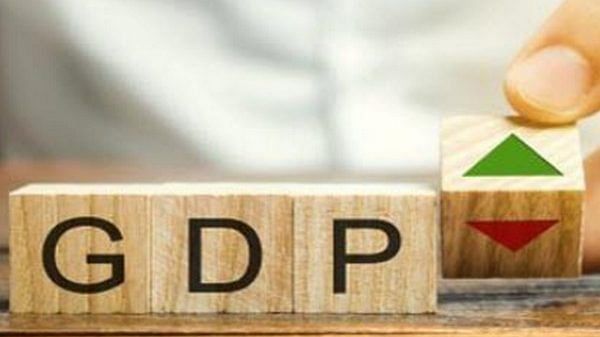Thank you dear subscribers, we are overwhelmed with your response.
It is my guarantee that in our third term, we will make India in the list of top 3 economies.” This promise of the Prime Minister is not a blind bet on the stock market, but the result of meaningful forecasts being made about the Indian economy growing in an orderly manner. Not long ago, India had surpassed Britain to become the fifth largest economy, and it is expected that by 2027, India will overtake Germany and Japan in terms of GDP. However, apart from this, India’s position in many indices of the economy remains a matter of concern for economic policymakers, which is very important to work on.
GDP Growth
Between 2014 and 2023, India’s GDP grew by 83%, while the GDP of the US grew by 54%, the UK‘s 3%, France’s 2% and Russia’s 1% in the same period. Italy’s GDP has not changed, while Brazil’s has been decreased by 15%. After Covid-19, India has made a good comeback in terms of GDP. According to a recent IMF report, India will grow at 6.1 per cent in 2023, which is being seen from a positive perspective. Apart from this, many other reports have also said that even if India grows at 6% instead of the expected 8-9 per cent, it will surpass Germany and Japan in terms of GDP by 2027. Because India’s GDP will grow by 38% (estimated) in the period from 2023 to 2027, while the GDP of Germany and Japan will grow by only about 15%.
India’s foreign exchange reserve has also crossed $600 billion, due to which there are good signs in terms of foreign investment. Many schemes like PLI have also been implemented by the government for the progress of industries, so that manufacturing can be encouraged. In this year’s budget, presented by the government in February, capital investment has also been increased to ₹ 10 lakh crore, which will prove worthwhile in the future.
Challenges
However, apart from this, India’s position in many other economic indices is worrisome. If we look at GDP per capita, then India comes at the bottom of the top 10. India’s per capita GDP ($2,600) is even much lower than countries like Brazil ($10,000) and Italy ($37,000). Apart from this, when India’s GDP reaches the third position in 2027, it will still be one-fifth of China’s GDP and only one-sixth of America’s GDP.
India’s public debt also remains in a worrisome state at 85.7%. Due to the upcoming elections, the government will hardly cut its expenditure, so the public debt will hardly be reduced. Mr. M Govind Rao, a member of the 14th Finance Commission, has written in an article that 5% of the country’s GDP and 25% of the income from revenue receipts goes to repaying the interest of the loan taken. This expenditure on paying interest alone is more than the total expenditure on education and health. In states like Punjab, Kerala, Rajasthan and West Bengal, this situation is even more worrisome.
Recent decisions such as some state governments going back to the old pension scheme, the central and some state governments holding job fairs to make large-scale government recruitment, and the central government pumping around Rs 1 lakh crore into low-income companies like BSNL, are the decisions that will increase public debt in the future. Apart from this, due to some (political) reasons, the disinvestment policy of the government has also been sluggish for a long time, due to which a source of government income has become weak. This is also a major reason for pushing the government towards debt.
It is true that after Covid, the government has made a special policy keeping in mind every sector, in which special attention has been paid to supply chain strengthening sectors like semiconductors and electronics, increasing manufacturing and generating employment. But the government still has a lot to work on in areas such as per capita income, public debt and human development index. It is expected that the slogan of “Yahi samay hai, Sahi samay hai” given by Prime Minister Modi will encourage economic policymakers to bring reforms in all these areas.
These pieces are being published as they have been received – they have not been edited/fact-checked by ThePrint.

